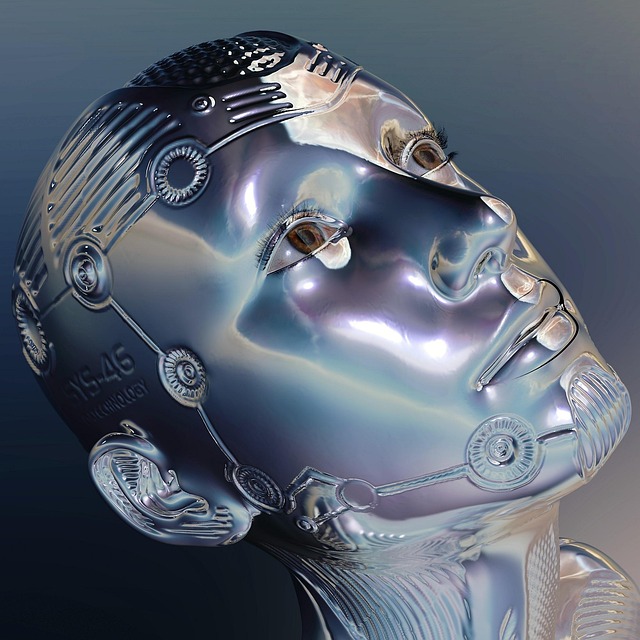
AI и The Trust Revolution: как технологии трансформируют человеческие связи
Искусственный интеллект (ИИ) больше не является футуристической концепцией; Это стало неотъемлемой частью нашей повседневной жизни, влияющей на то, как мы общаемся, работаем и укрепляем доверие. Статья «ИИ и The Trust Revolution: как технологии преобразуют человеческие связи» из * иностранных дел * входит в это преобразующее путешествие, подчеркивая глубокое влияние ИИ на человеческие взаимодействия и динамику доверия.

Эволюция доверия в эпоху ИИ
Историческая перспектива доверия
Доверие всегда было краеугольным камнем человеческих отношений, развивающихся от личных взаимодействий до институциональных и теперь цифровых обязательств. Исторически доверие было построено через личные взаимодействия, общий опыт и общины. С появлением технологий, особенно в Интернете, доверие начало переходить к цифровым платформам, где алгоритмы и данные сыграли важную роль в формировании восприятия.
Появление ИИ и его влияние на доверие
Интеграция ИИ в различные сектора ввела новые измерения для доверия. Системы ИИ, способные к обучению и адаптации, в настоящее время принимают решения, которые когда -то были исключительно человеческими обязанностями. Этот сдвиг бросает вызов традиционным представлениям о доверии, так как люди теперь должны привлекать уверенность в машинах и алгоритмах.
Роль AI в формировании человеческих взаимодействий
Улучшение каналов связи
Инструменты с AI, такие как чат-боты и виртуальные помощники, произвели революцию в общении, предоставляя мгновенные ответы и персонализированные взаимодействия. Эти инструменты анализируют пользовательские данные, чтобы предложить индивидуальный опыт, делая взаимодействия более эффективными и ориентированными на пользователя. Например, Ай чат -боты в обслуживании клиентов могут обрабатывать запросы 24/7, обеспечивая своевременную помощь.
облегчение удаленных соединений
Глобальный сдвиг в сторону удаленной работы и виртуальных встреч был значительно поддержан технологиями ИИ. Платформы, управляемые AI, улучшают видеоконференции, улучшая аудио и визуальное качество, обеспечивая переводы в реальном времени и даже предлагая виртуальные фоны для создания более привлекательной среды. Эти достижения делают удаленные взаимодействия более плавными и заслуживающими доверия.
Трастовые проблемы в интеграции искусственного интеллекта
Парадокс доверия ИИ
По мере того, как системы ИИ становятся более сложными, они часто генерируют результаты, которые внимательно имитируют человеческие ответы, что приводит к парадоксу «Траст ИИ». Это явление возникает, когда пользователям считает, что понять, является ли информация по -настоящему точной или просто правдоподобной, что потенциально приводит к неуместному доверию. (en.wikipedia.org)
этические соображения и предубеждения
Системы ИИ обучаются на обширных наборах данных, которые могут содержать неотъемлемые смещения. Если не будет должным образом рассмотрено, эти предубеждения могут увековечить стереотипы и несправедливое лечение, разрушая доверие к приложениям искусственного интеллекта. Обеспечение этической разработки ИИ требует прозрачности, подотчетности и непрерывного мониторинга для смягчения таких проблем.
Создание заслуживающих доверия систем ИИ
Прозрачность и объяснение
Чтобы ИИ доверял, его процессы принятия решений должны быть прозрачными и понятными. Пользователи должны иметь возможность понять, как и почему достигаются определенные результаты, способствуя ощущению контроля и уверенности в системе. Эта прозрачность имеет решающее значение в таких секторах, как здравоохранение, где ИИ помогает в диагностике и планировании лечения.
этические рамки и ответственность
Создание этических руководств и привлечение систем ИИ, ответственных за их действия, являются жизненно важными шагами в укреплении доверия. Организации должны внедрять регулярные аудиты, оценки воздействия и участвовать в различных командах в разработке ИИ, чтобы обеспечить справедливость и инклюзивность. Совместные усилия среди заинтересованных сторон могут привести к созданию надежных и заслуживающих доверия систем ИИ. (jia.sipa.columbia.edu)
Будущее динамики доверия человека-ай
развивающиеся отношения между людьми и ИИ
По мере того, как ИИ продолжает развиваться, отношения между людьми и машинами станут более переплетенными. Эта эволюция требует переопределения доверия, выходящего за рамки традиционных человеческих взаимодействий и человеческих взаимодействий, чтобы охватить сотрудничество с человеком. Понимание и управление этим доверием будет иметь важное значение для успешной интеграции ИИ в различные аспекты общества.
непрерывное обучение и адаптация
Системы ИИ должны быть разработаны, чтобы учиться на взаимодействии и адаптироваться с течением времени, улучшая их производительность и надежность. Этот процесс непрерывного обучения может повысить доверие, поскольку пользователи наблюдают за ростом и отзывчивости системы к своим потребностям.
Заключение
Интеграция ИИ в взаимодействие человека представляет как возможности, так и проблемы. Хотя ИИ имеет потенциал для повышения коммуникации, эффективности и принятия решений, он также поднимает важные вопросы об доверии, этике и подотчетности. Рассматривая эти проблемы посредством прозрачности, этической практики и совместных усилий, мы можем использовать весь потенциал ИИ в преобразовании человеческих связей.
Для более глубокого изучения этой темы см. В оригинальной статье в *иностранных делах *.